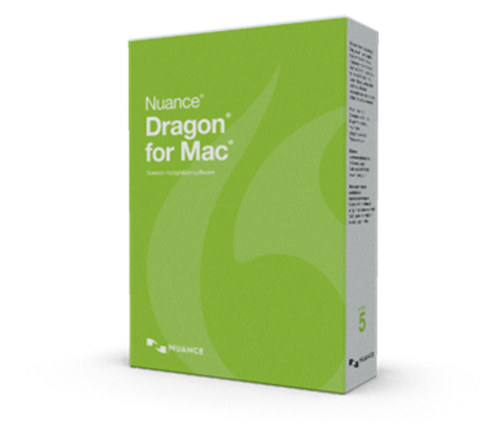Installing Dragon Naturally Speaking on an Intel based Macintosh
Nuance Dragon For Mac 5.0
Find the Top Nuance Communications Mac Productivity Softwares with the MSN Buying Guides Compare Products and Brands by Quality, Popularity and Pricing Updated 2020.
- Dragon Professional Individual supports Nuance-approved digital voice recorders and smart phones for advanced recording functionality and can automatically transcribe the audio files to text back at your PC. It leverages all the accuracy improvements gained from the state-of-the-art speech recognition engine for fewer post-corrections.
- Nuance Dragon Dictate 2.5 for Mac review. See all articles. Latest in Apple macOS Big Sur review: A mix of new and familiar 4h ago View. The MacBook Pro M1 is $100 cheaper at.
- Dragon speech recognition software is better than ever. Speak and your words appear on the screen. Say commands and your computer obeys. Dragon is 3x faster than typing and it's 99% accurate.
Dragon NaturallySpeaking is the recognized leader in continuous speech recognition technology. Until recently, owners of Apple computers have been unable to use this software and have been limited to the use of iListen and IBM ViaVoice. Now, with Intel based Apple Macintosh computers and the presense of Parallels, Apple users have the option of installing and using Dragon on a 'virtual operating system' on their systems. The process is described here.

Prerequisites for this include the following:
- An intel based Macintosh
- Parallels Software
- Windows XP or Vista installation Disk
- Dragon NaturallySpeaking
- All necessary microphone hardware (we recommend using a good quality microphone and a USB adapter
We have found the following method, adapted from the method presented by 'Webair' on the Parallels Forum, to be an effective method of running Dragon NaturallySpeaking on an Intel based Macintosh.
Preliminaries:Before using this method it is important that you accomplish the following:
- Install Parallels Desktop on your Intel Mac
- Set up a virtual operating system using Windows XP using Parallels
- Install Dragon NaturallySpeaking on the Windows XP virtual machine using the standard methods of Dragon installation
- Before actually setting up a microphone and configuring a new user in Dragon, follow the steps listed below.
Configuration: With the preliminaries accomplished, your system should be configured as follows:
- In the Mac OS please go to the 'System Preferences' - 'Sound' - 'Input' - highlight your device in the list (this will make it the default audio input device for Mac).
- Set the input volume in the Preference pane so that the microphone input level peaks near the middle of the bar range (editors note: alternatively set the level in the mid to upper range)
- With your virtual machine stopped, Start Parallels Desktop, choose your virtual machine (VM). In Configuration Editor in the USB Controller section turn'Autoconnect USB devices' to OFF (or un-check the 'Enabled' button).
- In Configuration Editor, in the Audio tab, choose the Default Audio as the input device.
- Run the virtual machine.
- Voice settings for Playback and Recording in the Windows XP Control Panel should be left at “Intel[r] Integrated Audio”.
- Start and run NaturallySpeaking in the normal fashion. With no other audio input available, it will default to the 'intel integrated audio' during audio set-up.
Notes:
In our experience, the above method allows use of NaturallySpeaking on the Windows 'Virtual Machine' and dictation into all text input windows on the Windows side, but will not provide input into documents on the Mac side, even in the 'coherence' mode.
Nuance Dragon Naturallyspeaking For Mac
Another peculiarity of this method is that with when a USB microphone is disconnected, the link between the Macintosh and Windows side is lost and does reconnect unless the virtual machine is closed and re-opened (a 5 second process). It is not, however, necessary to actually restart the Windows operating system to reconnect - you need only open and close the virtual machine. For some 'road warriors' this may have implications. Likewise for the user that has the need to connect and reconnect the USB microphone or device throughout the day, this poses a minor annoyance.
Comments on these recommendations? Have you discovered a better method of setting up Dragon NaturallySpeaking on an Intel-based Mac? Please share your findings with us and we'd be delighted to post them. Contact: jon@speechrecsolutions.com